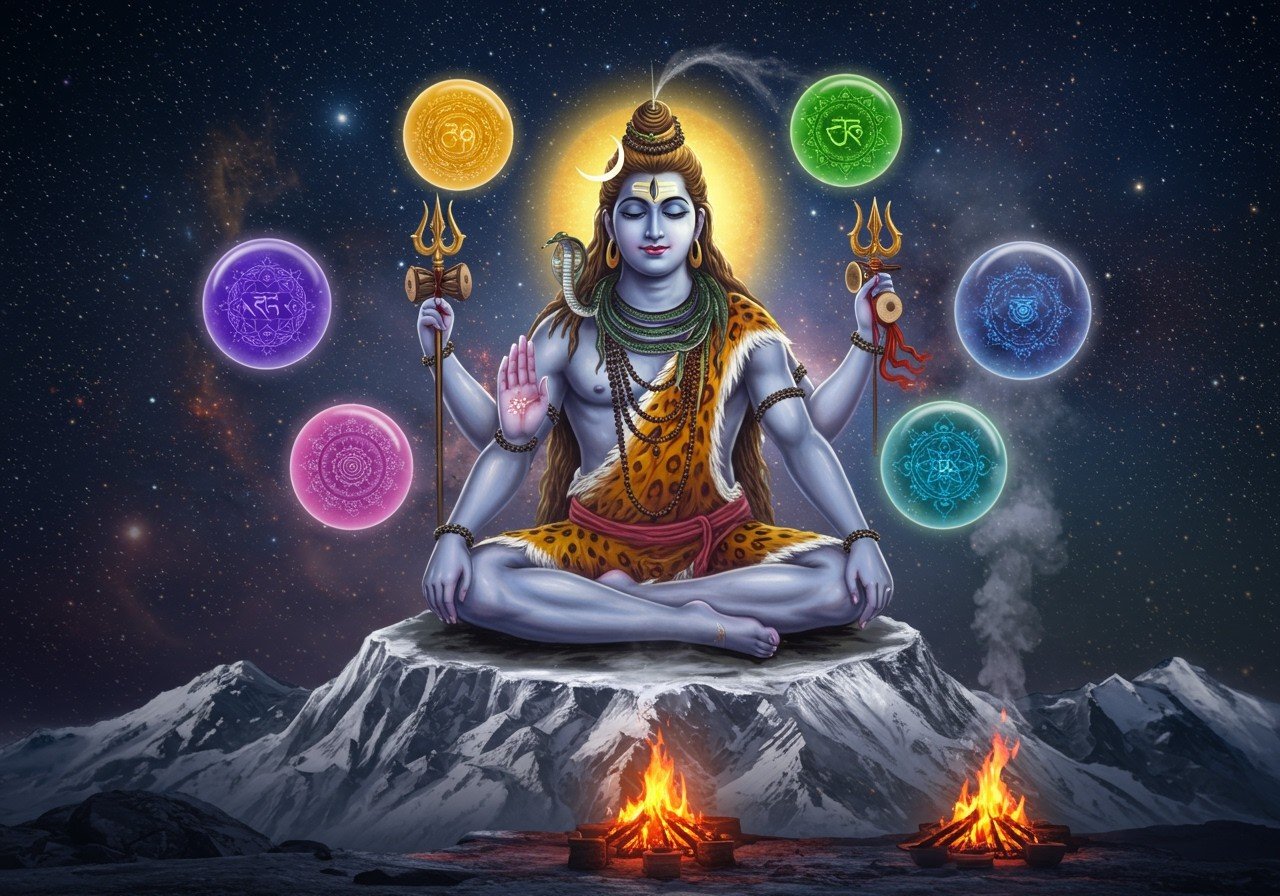
The mantra ‘Om Namah Shivaya’ holds a deep place in Hindu spirituality, especially cherished by Indians who value tradition and spiritual growth. This sacred chant resonates deeply with those seeking a stronger connection with the divine. Many incorporate it into their daily rituals, finding solace and peace in its powerful vibrations. As online shopping makes authentic ritual items more accessible, incorporating this sacred mantra into one’s spiritual practice becomes even easier.
Understanding Om Namah Shivaya
Let’s delve into the profound meanings behind ‘Om Namah Shivaya’. ‘Om’, the primordial sound of the universe, embodies ultimate reality itself. ‘Namah’ signifies bowing or reverence, a gesture of deep devotion to Lord Shiva. ‘Shivaya’ invokes Lord Shiva, the auspicious one, representing the divine consciousness within. Chanting this mantra facilitates a deeper connection with the divine during meditation. It promotes mental tranquility, self-awareness, and spiritual awakening—essential elements for inner harmony.
Deconstructing the Five Syllables: Meanings and Connections
Each of the five syllables in ‘Om Namah Shivaya’ carries a unique meaning, linking the practitioner to the five elements of nature, creating a sense of balance and harmony.
- Na: This syllable connects us to the earth, grounding us firmly in the physical realm. It represents stability and provides a strong foundation for our spiritual journey. Think of it as the roots of a tree, anchoring us to the earth.
- Ma: Representing water, this syllable embodies the fluidity of our emotions. It encourages adaptability and fosters emotional well-being, allowing us to navigate life’s currents with grace.
- Shi: Connected to fire, this syllable symbolizes transformation and the dynamic energy within us. It ignites passion and drive, propelling us forward on our path. Just as fire purifies, this syllable helps us refine our inner selves.
- Va: Signifying air, this syllable embodies the breath of life, the vital force that sustains us. It’s essential for vitality, movement, and the very essence of our being.
- Ya: Representing ether or space, this syllable connects us to the vastness of the universe. It reminds us of our inherent connection to everything around us, fostering a sense of belonging and wonder.
These elemental connections deepen our relationship with nature, nurturing peace and balance within our lives.
Om Namah Shivaya and the Chakras: A Harmonious Alignment
Each syllable in ‘Om Namah Shivaya’ aligns with specific chakras, facilitating spiritual growth and the smooth flow of energy.
- Na: Corresponds to the Muladhara (Root) Chakra, located at the base of the spine, providing a sense of security and stability.
- Ma: Aligns with the Svadhisthana (Sacral) Chakra, just below the navel, enhancing creativity, emotional expression, and overall emotional health.
- Shi: Stimulates the Manipura (Solar Plexus) Chakra, located in the upper abdomen, empowering self-confidence and willpower.
- Va: Energizes the Anahata (Heart) Chakra, situated in the center of the chest, fostering love, compassion, and connection.
- Ya: Resonates with the Vishuddha (Throat) Chakra, at the base of the throat, promoting open communication and authentic self-expression.
This alignment helps balance the body’s energy centers, supporting overall well-being and spiritual development.
The Panchakshari Mantra: Five Syllables of Power
‘Panchakshari’ translates to ‘five syllables’, highlighting the core essence of ‘Om Namah Shivaya’. This mantra is a cornerstone of spiritual practices like Japa meditation. Chanting it purifies the mind and body, dispelling negativity. It cultivates a deep sense of unity with the divine, enhancing spiritual discipline and focus. The Panchakshari mantra plays a vital role in many traditional Hindu rituals.
Cultural and Spiritual Significance: A Timeless Legacy
<'Om Namah Shivaya' is woven into the fabric of Indian culture and spirituality. It's an integral part of pujas and religious ceremonies, enriching the spiritual atmosphere. The mantra takes center stage during festivals like Maha Shivaratri, a celebration dedicated to Lord Shiva. Its presence in art and iconography further underscores its deep-rooted significance. This sacred mantra resonates through generations, fostering personal growth and self-awareness. In contemporary times, its use in yoga and meditation adds another dimension to its influence, supporting holistic well-being. For more insights into Maha Shivaratri, explore our blog post: Maha Shivaratri: Songs, Mantras, and Bhajans – A Guide for Spiritual Celebration.
Poojn: Your Companion on the Spiritual Path
At poojn.in, we understand the importance of having access to authentic items for your Shiva puja and personal worship. That’s why we offer a curated selection to support your spiritual practices. We are proud to offer a diverse range of items, from sacred murtis crafted with reverence to pure copper items that enhance your connection with the divine. Explore our collection and find everything you need to create a sacred space in your home.
For personalized guidance on product selection or puja requirements, our team is here to assist you:
- Call: 03369029784
- WhatsApp: 9476142738
We ensure that all our products meet traditional standards and are sourced from trusted suppliers, giving you the peace of mind that comes with authenticity. Visit www.poojn.in today to explore our complete range of Shiva puja items and discover the perfect additions for your spiritual journey. We offer secure online payments and doorstep delivery across India for your convenience. Looking for essential puja items? Our Maha Shivaratri Puja Kits blog post can guide you.
Embracing the Essence: Om Namah Shivaya in Everyday Life
Embracing ‘Om Namah Shivaya’ is like welcoming a timeless friend into your heart. Each syllable acts as a gentle guide, grounding you, encouraging adaptability, igniting your inner fire, nurturing your life force, and connecting you to the boundless universe. This mantra not only harmonizes your chakras but also nourishes your body, mind, and spirit. Chanting this sacred mantra is a bridge between ancient traditions and the rhythm of modern life. It’s a constant reminder of our connection to the divine and the vast cosmos. Whether during meditation, celebrations, or quiet moments of reflection, ‘Om Namah Shivaya’ enriches our spiritual path, offering comfort, strength, and profound meaning. May this mantra inspire you to explore its depths, enhancing your spiritual practice and well-being. Feel the warmth and wisdom it brings with every chant, illuminating your journey towards unity, balance, and lasting inner peace. You might also find our blog post on the sacred power of water in rituals insightful.
Common Questions about Om Namah Shivaya
What does Om Namah Shivaya signify? Om Namah Shivaya translates to “I bow to Shiva,” acknowledging Shiva as the supreme consciousness. It’s an expression of reverence and surrender to the divine.
How do the five syllables relate to the chakras? Each syllable corresponds to a specific chakra, promoting balance and purification within the body’s energy system. Chanting the mantra can align and energize these chakras.
Why is it called a Panchakshari mantra? ‘Panchakshari’ literally means ‘five syllables’ in Sanskrit, reflecting the mantra’s core structure. This five-fold nature connects it to the five elements and the five primary chakras.
What are the benefits of chanting Om Namah Shivaya? Chanting this mantra cultivates inner stillness, improves focus, and fosters a deeper connection with the divine. It is believed to bring peace, protection, and spiritual growth. Explore our blog post on Odisha festivals to see how mantras are incorporated into cultural celebrations.
Can anyone chant Om Namah Shivaya? Absolutely. This mantra is universal, embracing individuals of all ages and backgrounds who seek spiritual connection. It’s a powerful tool for anyone on a spiritual journey.
How often should I chant it? There’s no prescribed frequency. Chant it as often as you feel drawn to—daily, weekly, or whenever you seek solace and connection.
Is there a specific time for chanting? While there’s no strict rule, many find the tranquil hours of early morning or evening ideal, allowing for deeper absorption and resonance.


